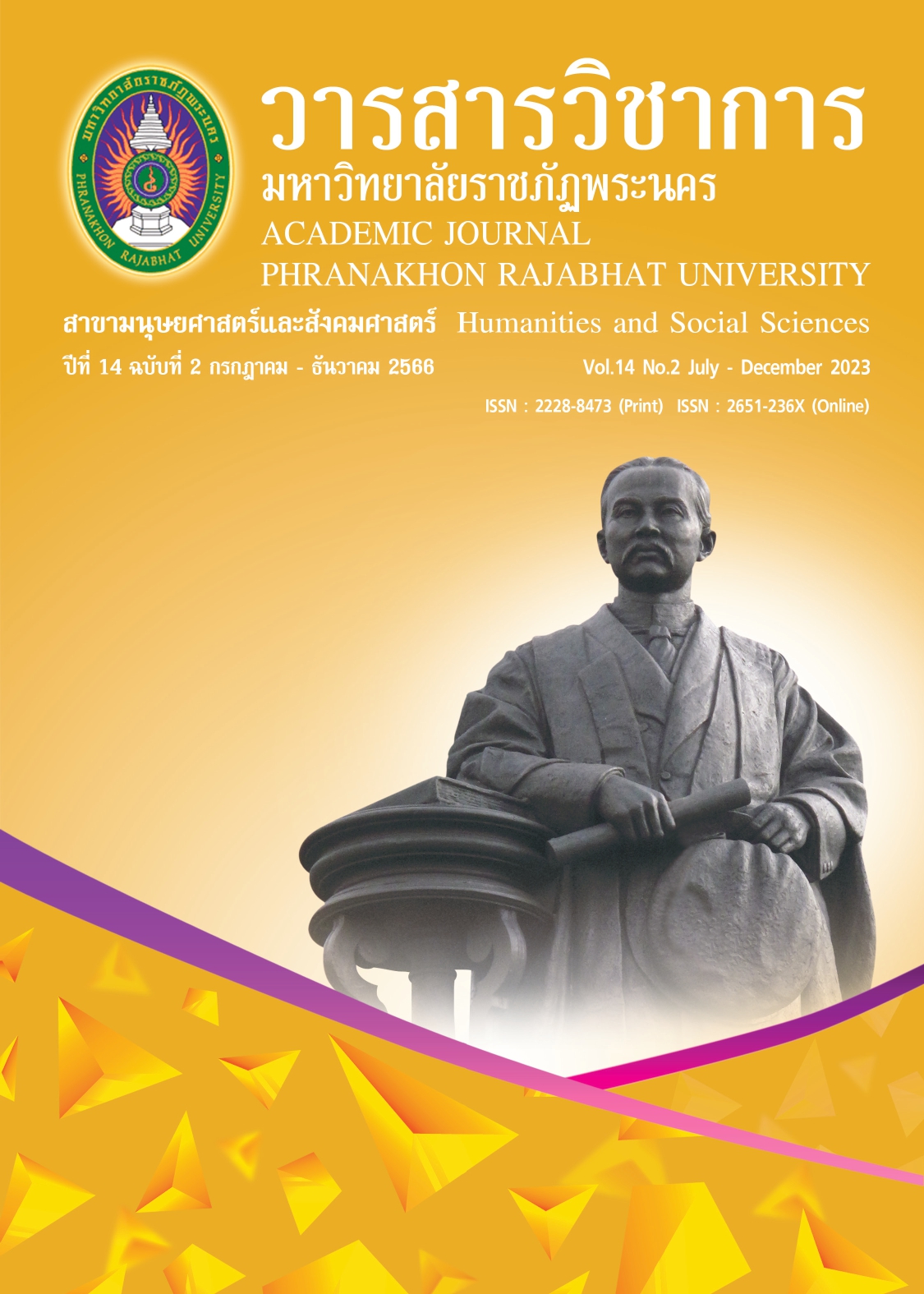แนวทางการเสริมสร้างทักษะการเรียนการสอนภาษาบาลี สาขาวิชาพระพุทธศาสนา ในสถาบันอุดมศึกษากลุ่มมหาวิทยาลัยราชภัฏ
คำสำคัญ:
ภาษาบาลี, แนวทางการเสริมสร้างทักษะการเรียน , รูปแบบองค์ความรู้ใหม่, มหาวิทยาลัยราชภัฏบทคัดย่อ
การวิจัยนี้มีวัตถุประสงค์ 1) เพื่อศึกษาสภาพปัญหาการเรียนการสอนวิชาภาษาบาลีของสาขาวิชาพระพุทธศาสนา 2) เพื่อวิเคราะห์แนวทางการจัดการเรียนการสอนวิชาภาษาบาลีของสาขาวิชาพระพุทธศาสนาให้เหมาะสมกับบริบทของหลักสูตร และ 3) เพื่อเสนอแนวทางการเสริมสร้างทักษะการเรียนการสอนวิชาภาษาบาลีของสาขาวิชาพระพุทธศาสนา เครื่องมือการวิจัยเป็นรูปแบบการวิจัยแบบผสมผสาน คือ แบบสอบถามเชิงสำรวจ และแบบสัมภาษณ์เชิงลึกโดยการระดมสมองเสวนากลุ่ม สถิติที่ใช้ในการวิเคราะห์ข้อมูลประกอบด้วย ได้แก่ ความถี่ ร้อยละ ค่าเฉลี่ย และส่วนเบี่ยงเบนมาตรฐาน
ผลการวิจัยพบว่า 1) สภาพปัญหาการเรียนการสอนวิชาภาษาบาลีของสาขาวิชาพระพุทธศาสนา พบว่า มี 4 ด้าน ได้แก่ ค่าเฉลี่ยรวมด้านสื่อการเรียน 4.07 มีค่ามากที่สุด รองลงมา ค่าเฉลี่ยรวมด้านการจัดการเรียนการสอน 3.84 รองลงมา ค่าเฉลี่ยรวมด้านกิจกรรมการเรียนการสอน 3.74 และค่าเฉลี่ยรวมด้านหลักสูตร 3.71 น้อยที่สุด ตามลำดับ
2) วิเคราะห์แนวทางการจัดการเรียนการสอนวิชาภาษาบาลีของสาขาวิชาพระพุทธศาสนาให้เหมาะสมกับบริบทของหลักสูตร พบว่า (1) เทคนิคการถ่ายทอดวิชาภาษาบาลีไม่สอดคล้องกับธรรมชาติของนักศึกษา ควรใช้พุทธลีลา 4 (2) ไม่มีแรงจูงใจเรียนวิชาภาษาบาลี ควรให้รางวัล (3) ไม่มีสื่อการเรียนการสอนทันสมัย ควรนำสื่อดิจิทัลที่หลากหลาย และ (4) ปัญหาด้านหลักสูตร ควรสร้างรายวิชาให้ตรงกันทุกสถาบันการศึกษา
3) รูปแบบองค์ความรู้ใหม่ของแนวทางการเสริมสร้างทักษะการเรียนการสอนวิชาภาษาบาลีของสาขาวิชาพระพุทธศาสนาที่เหมาะสม คือ CLIA MODEL โดย C = Curriculum หลักสูตรภาษาบาลีระดับอุดมศึกษา L = Learning Outcome การจัดการเรียนการสอนวิชาภาษาบาลีที่เป็นเลิศ I = Instructional Media สื่อการเรียน A = Activity กิจกรรมเรียนภาษาบาลี
เอกสารอ้างอิง
Banakornkul, W. (2005). The development of CAI for translating Bihar into Thai
for Pali Scripture students, sentence 1-2. research report Mahachulalongkorn University Royal College. Buddhakhos Campus. Nakhon Pathom. (In Thai)
Chantawanich, S. (2006). Qualitative Research Methods. 14th edition. Bangkok:
Chulalongkorn Printing House. university. (In Thai)
Dhammasaro, P.(2011). An Educational Administration of Phrapariyattidhamma
School on Palisection : A Case Study of Watmolilokayaram in Bangkokyai Bangkok. Master of Art (Educational Administration). (In Thai)
Papassarametee, P. (2008). A Study of Implementation of Buddhist Education
Management: Pali Section Phrapariyatidham Schools in Bangkok. Graduate School, Srinakharinwirot University. (In Thai)
Sasisuwanphong, P. (2014). The development of a Pali grammar learning video, The
Eastern University of Management and Technology-Poly Journal, 11(2), 1-
(In Thai)
Suthon, R. (2013). The necessity of learning Pali in the study of Buddhism.
Bangkok: Mahachulalongkornrajavidyalaya University. (In Thai)
Thanavaro, P. (2015). The condition of teaching and learning of Pali teachers.
in the Pali Division of the Pali Studies School Roi Et Province. Mahamakut University Journal Royal College, Roi Et Campus, 4, (2), 75-88. (In Thai)
Yantipo, P. (2010). Study of factors leading to achievement and satisfaction of
Students to Teaching and Learning Management at Phrapariyattidhamma School, Pali Section: A Case Study Chong Kham Temple, Ngao District, Lampang Province, Academic Year 2009. Master's Degree Thesis Buddhism graduate school, Mahachulalongkornrajavidyalaya University. (In Thai)
ดาวน์โหลด
เผยแพร่แล้ว
รูปแบบการอ้างอิง
ฉบับ
ประเภทบทความ
สัญญาอนุญาต
ลิขสิทธิ์ (c) 2023 วารสารวิชาการ มหาวิทยาลัยราชภัฏพระนคร

อนุญาตภายใต้เงื่อนไข Creative Commons Attribution-NonCommercial-NoDerivatives 4.0 International License.
"บทความวิชาการในวารสารฉบับนี้ ถือเป็นความรับผิดชอบของผู้เขียนเท่านั้น"
สงวนลิขสิทธิ์ตามพระราชบัญญัติลิขสิทธิ์




